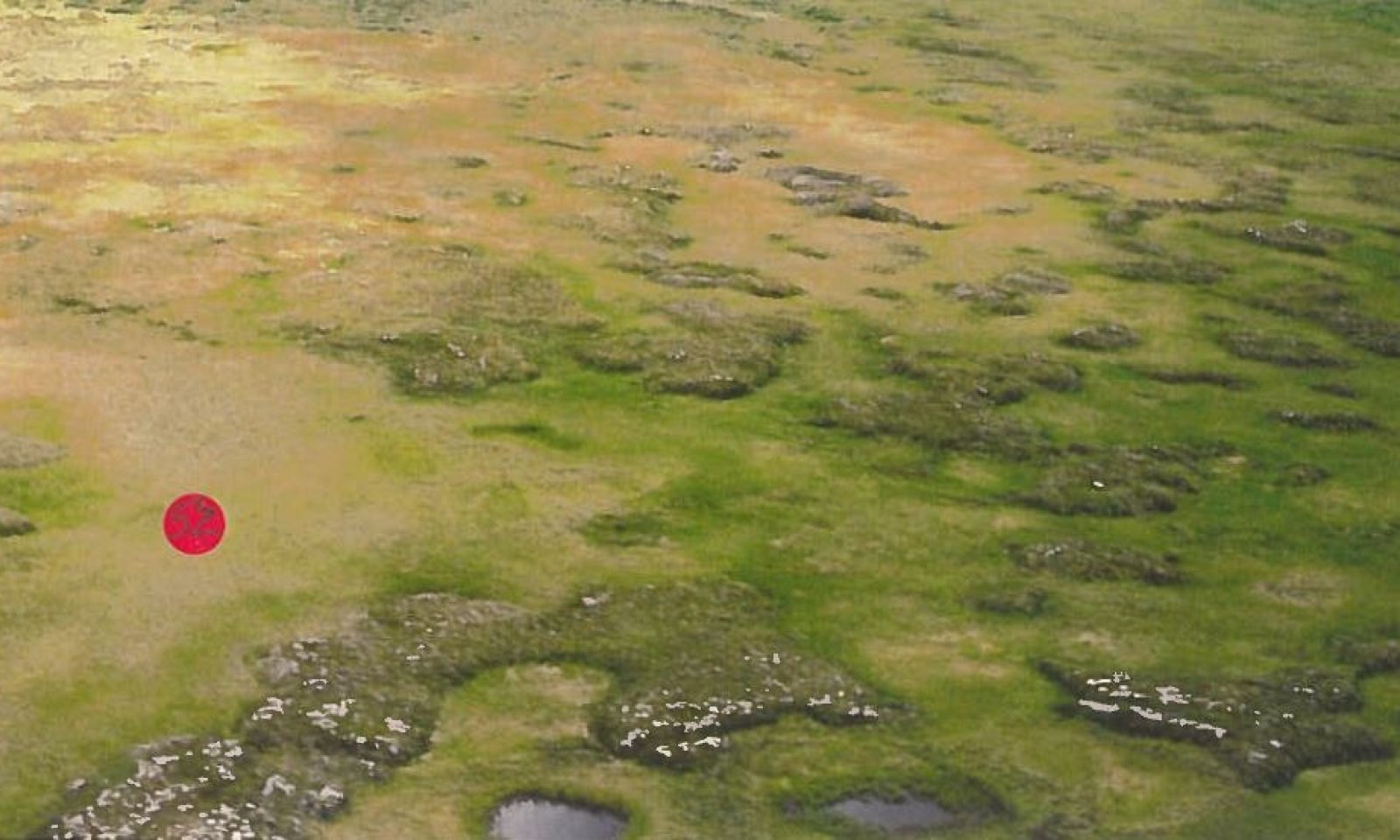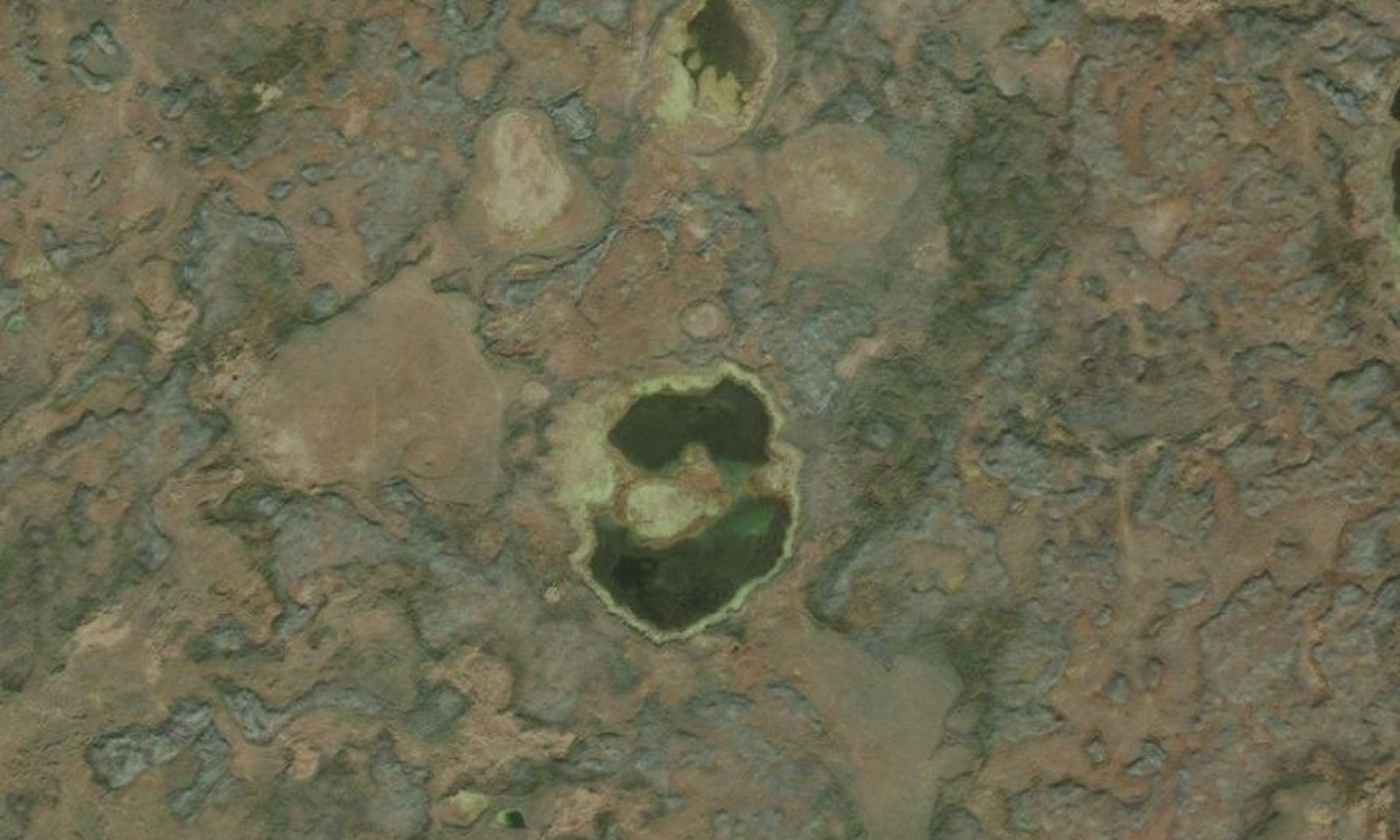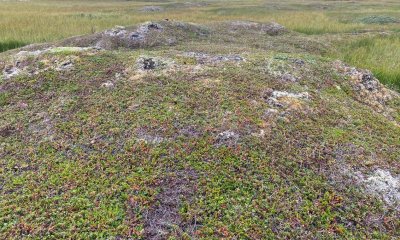
Arctic Sedge Loamy Frozen Slopes
Scenario model
Current ecosystem state
Select a state
Management practices/drivers
Select a transition or restoration pathway
-
Transition T1
Human introduction of reindeer and/or muskox to islands
More details -
Transition T3
A peat mound or palsa raises up from the surrounding wet sedge meadow
More details -
Restoration pathway R1
Long periods of time after extirpation of human introduced ungulates
More details -
Transition T2
A peat mound or palsa raises up from the surrounding wet sedge meadow
More details -
Transition T4
Thermokarst and collapse of peat mounds.
More details -
No transition or restoration pathway between the selected states has been described
Target ecosystem state
Select a state
Description
The historic and current use of introduced ungulates in this MLRA may have altered the potential natural vegetation on these islands. Islands in this MLRA without a history of introduced grazing have reference state vegetation, while islands with introduced herds of reindeer and/or muskox (Nunivak, St. Lawrence, and St. Matthews Islands) have grazing state vegetation.
Currently no data has been collected in areas of this MLRA in reference condition. Future targeted data collection efforts can address whether range in excellent condition within the grazing state is similar to reference state vegetation and these results could dramatically alter this provisional state and transition model.
Submodel
Description
Two plant communities occur within the grazing state and the vegetation differs in large part due human use of off road vehicles.
The data for this state is based on a mixture of recent field work conducted on Nunivak Island (2022-2023) and historical range surveys conducted on Nunivak Island (Swanson et al. 1986, Kautz et al. 1992). Future work will be required to determine if the vegetation on Nunivak Island represent the vegetation across the grazed islands of this MLRA.
Submodel
Description
Peat mounds develop from the surrounding wet sedge meadows associated with the reference and grazing states. A peat mound is an elliptical dome-like permafrost mound containing alternating layers of ice lenses and peat or mineral soil, which are typically less than 10 feet in height. The edges of these raised features are strongly sloping.
Peat mounds can raise significantly above the water table and soil drainage can improve. If these landforms raise high enough above the water table, soil temperature increases, and eventually ice-lens melt. As soils thaw and ice melts, these peat mounds eventually collapse (Seppälä 1986; Pielou 1995). After collapse, the soils are thought to revert to thermokarst state conditions.
Two plant communities occur within the peat mound state and the vegetation differs in large part due to the degree of ungulate use.
Submodel
State 4
Thermokarst State



Description
Thermokarst results from the thawing of ice rich permafrost and subsequent setting of ground, which can lead to thermokarst depressions. This is a natural event that was commonly observed in areas with peat mounds and sedge meadows (see associated state photo). Thermokarst can also result from disturbance such as land clearing. While thermokarst can be readily observed, details related to thermokarst succession are poorly understood. After an unknown timeframe, thermokarst depressions could theoretically revert back to plant communities associated with the reference state (Myers-Smith et al. 2008). However, the timeframe for recovery is likely outside the scope of typical land management priorities. At this time, restoration back to reference conditions is not considered within the state-and-transition model.
The thermokarst plant community is characterized as either halophytic herb meadow or fresh grass marsh (Viereck et al. 1992). (Viereck et al. 1992). Associated soils pond and have a persistent high water table. The thermokarst state has one documented plant community.
Future data collection efforts and research would likely enhance information about existing plant communities within this state and allow for better understanding of the potential transitions from one community or state to another.
Submodel
Mechanism
A peat mound or palsa raises up from the surrounding wet sedge meadow. This raised feature is large enough to result in a mosaic of vegetation.
Mechanism
Long periods of time after extirpation of human introduced ungulates.
Mechanism
A peat mound or palsa raises up from the surrounding wet sedge meadow. This raised feature is large enough to result in a mosaic of vegetation.
Model keys
Briefcase
Add ecological sites and Major Land Resource Areas to your briefcase by clicking on the briefcase (![]() ) icon wherever it occurs. Drag and drop items to reorder. Cookies are used to store briefcase items between browsing sessions. Because of this, the number of items that can be added to your briefcase is limited, and briefcase items added on one device and browser cannot be accessed from another device or browser. Users who do not wish to place cookies on their devices should not use the briefcase tool. Briefcase cookies serve no other purpose than described here and are deleted whenever browsing history is cleared.
) icon wherever it occurs. Drag and drop items to reorder. Cookies are used to store briefcase items between browsing sessions. Because of this, the number of items that can be added to your briefcase is limited, and briefcase items added on one device and browser cannot be accessed from another device or browser. Users who do not wish to place cookies on their devices should not use the briefcase tool. Briefcase cookies serve no other purpose than described here and are deleted whenever browsing history is cleared.
Ecological sites
Major Land Resource Areas
The Ecosystem Dynamics Interpretive Tool is an information system framework developed by the USDA-ARS Jornada Experimental Range, USDA Natural Resources Conservation Service, and New Mexico State University.



